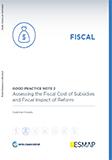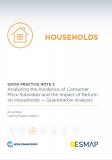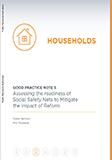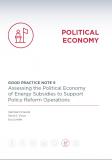Publications
By optimizing the water distribution network and investing in additional enhancements to the system, Sistema Intermunicipal de Agua y Saneamiento (SIMAS) Monclova (the operating agency for the municipal water system and sanitation services in Coahuila, Mexico) was able to increase water supply from 10 hours/day to 24 hours/day, while increasing access to an additional 40,000 customers, and at the same time reduced the total energy and water consumed. Prior to the project, the system faced 40% technical water losses in its drinking water network and, as a result, could only provide service for about 10 hours/day. A lack of financial resources limited the utility‟s ability to undertake capital-intensive infrastructure upgrades to improve the City‟s water distribution services.
In 2006, the Alliance to Save Energy‟s Watergy program offered technical assistance to help SIMAS Monclova identify and implement a series of improvements to improve its service levels. These included: optimization of the distribution network through changes in zoning patterns; use of hydraulic modeling to regulate water pressure and flows; sectorization of the network; detecting leaks and making repairs; and installing new pumps and motors to improve the system‟s electromechanical efficiency. The US$5.5 million project was implemented in 2009 and significantly improved operational performance, allowing for 24-hour service, connection of new customers, improved water flow and pressure—all while reducing total energy and water consumed.
The project resulted in energy savings of 4.75 million kWh (27% reduction) and water savings of 1.94 million cubic meters (m3)—equivalent to annual cost savings of US$380,000 to the utility. More important, the project led to increased revenues of some US$2.28 million due to the connection of new consumers, enhanced operational efficiencies, improvements in revenue collection, fewer complaints, and increased customer satisfaction.
ESMAP. 2010. Good Practices in City Energy Efficiency: Monclova, Mexico - Monclova and Border Fronterna Drinking Water System. ESMAP Energy Efficient Cities Initiative. Washington, DC: World Bank.



